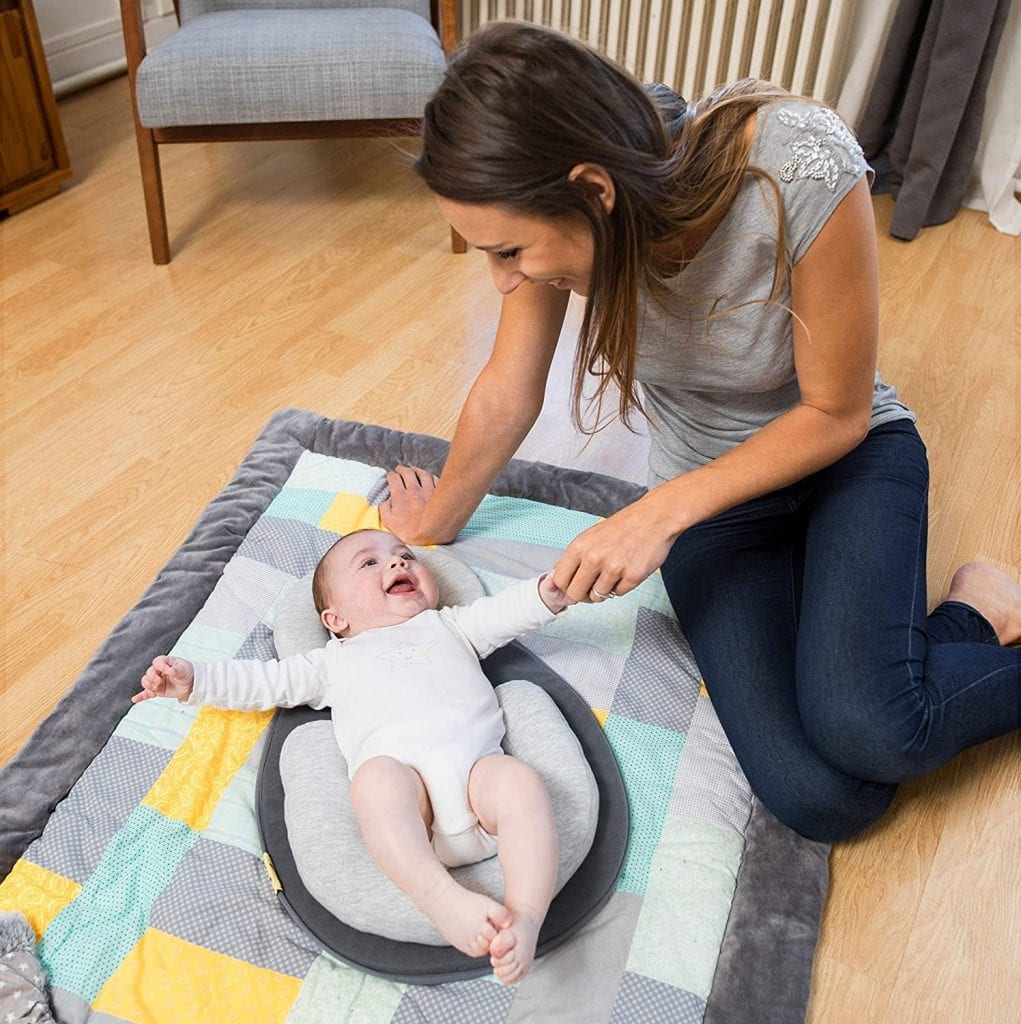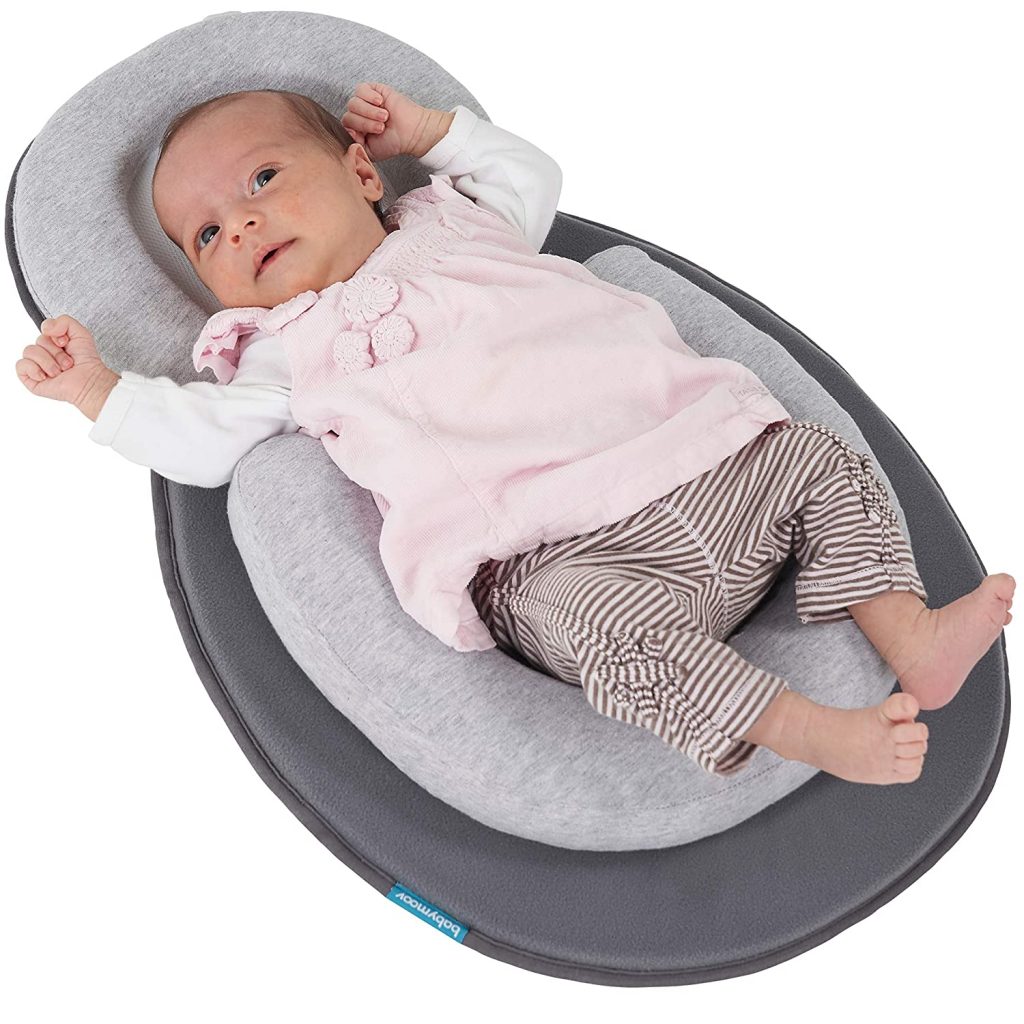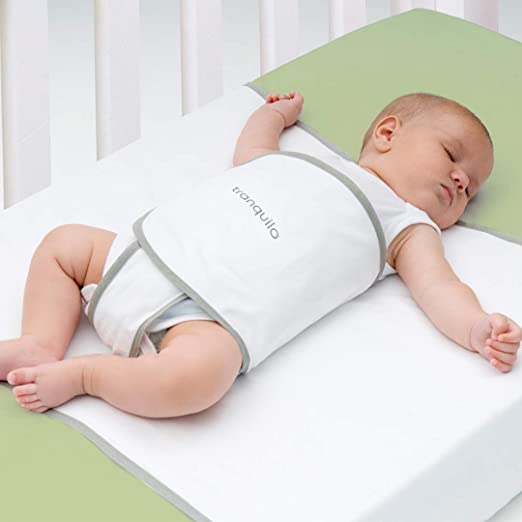As your child grows, you’ll see them become a little more mobile. Being able to roll over is a sign that their muscles are growing, and soon, they can learn how to crawl then walk.
However, it can be a little frustrating when your baby rolls over during sleep and cries. Not only that, but a baby sleeping on its tummy may not be safe. Stomach sleeping can lead to SIDS (Sudden Infant Death Syndrome). So even if your baby doesn’t wake up and cry, it’s still a problem. With that said, you must devote some time when your child is awake to have the baby on their tummy. This allows them to grow their muscles. However, when it’s bedtime, it’s time for babies to fall asleep and stay asleep on their back.

As parents, you want your child to always be safe. Hence, if you can find something that would help you achieve that, you would, for sure, grab the opportunity. The newborn lounger is a great baby accessory that would put your mind at ease whenever he or she sleeps. To help you learn more, we created a list of the best newborn lounger from Amazon. In this article, you will also find essential information about SIDS and how to promotes safe sleep for your little one. If you want to get a better understanding of it, you can continue reading.
BESTLA Newborn Lounger
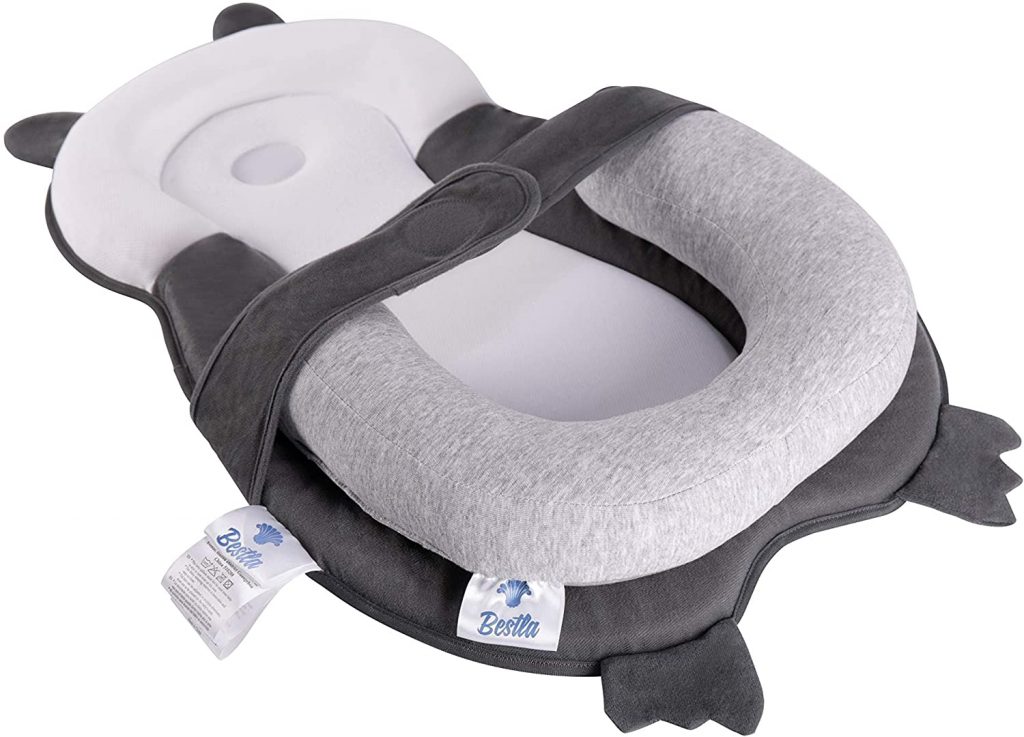
The baby pillow from Bestla is made with 95% cotton, 5% Elasthan;lining, 100 % polyester and 100% Sponge. It is highly recommended for babies 0-3 months as it is designed to keep your child safe and snug.
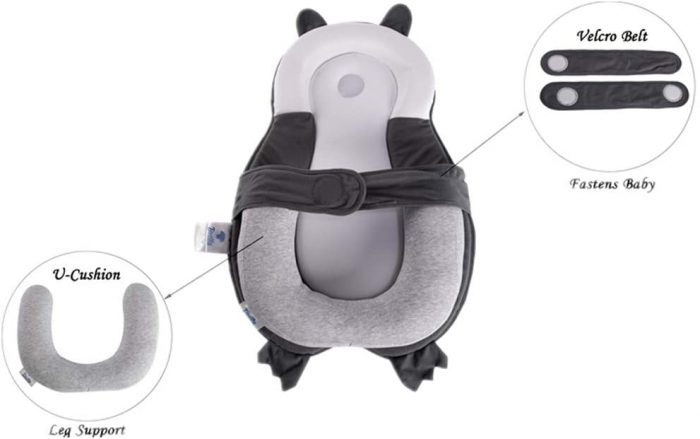
-
What Age Does A Baby Start Rolling?
Typically, babies start to learn to roll at about four months. They do this usually by kicking. It can take a lot of work, so sometimes, when a child rolls over, they find it harder for them to do again. When they are awake, the babies learning to roll isn’t a bad thing, but it becomes a problem during sleep.
A child will tend to roll from their back to their front once they fall asleep. It can be fun to watch them start to roll, attempt to do this, and encouraging it when they’re awake is good. After your child falls asleep and rolls on their tummy, some may like it, and others may not. The latter usually wakes up screaming and weeping, and that’s never fun.

-
When Your Baby Is Asleep On Their Tummy
If you see your infant starts to roll to their tummy, you can roll the child back. Do it gently, then the child shouldn’t wake up. With that said, we realize that this isn’t that practical if you’re spending all your time dealing with a baby who rolls. You can’t wake up every hour and make sure your child isn’t on their stomach.
Babies may have preferred sleeping positions to fall asleep in. Baby’s sleeping positions may include sleeping on their back, tummy, side, or another position. Just like you. But for you, all of these positions are safe, for your child, they may not be. However, some babies just have their unique sleeping position, then that’s okay.

The SIDS issue is a concern that your sleep consultant or pediatrician can talk to you about during consulting and give you guides on SIDS. There are also other ways to prevent SIDS while the baby is sleeping. These include:
Using a firm surface that has a sheet that tightly fits. A loose sheet may tangle up with the child. A child may strangle if the surface is too soft.
Not using any soft bumpers, pillows, toys, or blankets. A crib shouldn’t have anything in it, as it could be a hazard.
Keep the baby in the same room as the parents. By sharing the same room until the child reaches 12 months of age, you may be able to cut the risk of SIDS by half. This is because you can fix any problem you see immediately and not have the child deal with it on their own. You can read more about this in the sleep guides you received from your child’s doctor.
A baby stomach sleeping is not a death sentence, especially if you practice other ways of preventing SIDS. Plenty of babies have started rolling and slept on their stomachs, and a baby experimenting with new sleep positions is normal and should be encouraged. As long as the child can hold their head up and breathe, they should be fine. But what if they don’t like it? What if the baby always rolls on their stomach, then cries about it? This can definitely be frustrating.
-
What You Should Do About This With Your Baby
If you have a child that rolls on their tummy when they are asleep, they may wake up then cry. You can roll the baby back, but if they keep doing it, what are your options? How can you make sure the child has a good night of sleeping? There are a few sleep training ways you can do this that will also help prevent sleep regression.
-
Baby Tummy Time Practice
If your baby wakes and cries, this usually means they are strong enough to roll once, but not again. This usually means that you should practice sleep training by spending some time with your child to help them learn the skill of rolling both ways. When they are awake, devote some time to have the child on their stomach, and soon the child should be able to roll themselves back if they don’t like the position they are in.

Tummy time for infant is something as young as a newborn can practice. You do have to remember that depending on the baby’s age, tummy time can be extended longer, which will eventually help with sleep training and sleep regression. With a newborn, three sessions a day that lasts for 3 minutes is a good idea. After a few months, you can extend that to about 20 minutes.
Not doing tummy time enough can slow down sleep training milestones. It can take a little longer to crawl, walk, and to do other activities. You must do tummy time so that your child feels accomplished and wants to try new stuff.
-
Use A Swaddle While Baby Is Sleeping
For the baby rolling while sleeping and wakes up then cries, a swaddle may help, it involves wrapping a child up in a blanket to prevent the act of rolling. There are swaddles out there designed for specific ages, allowing a child to sleep comfortably, but also not allowing them to move any at all. Thus, sleep training occurs by teaching them to not roll as the baby sleeps. At a certain age, a child is too big for a swaddle, but chances are, they may be able to fit into one.

-
Wait A Bit
If your child is strong enough, don’t roll them back automatically. Instead, wait a few minutes. When the baby starts to roll and can roll back themselves, they may stop to cry and sleep regression can be prevented. If they don’t need you, the crying will be short-lived and they will just learn how to fix this problem on their own. It can be frustrating to hear a child cries when you’re trying to sleep. But sometimes, engaging your child in sleep training and waiting it out fixes the problem longer than you roll them over every single time. Regardless of if you wait or not, both ways will help your baby then toddler sleep well.
It can be a little frustrating, but by practicing these sleep training steps, your baby starts to roll around without a care and will have learned a helpful and new skill. If you need additional help, you can always contact your sleep consultant or pediatrician for some sleep consulting.

Last Updated on May 11, 2023 by Jeanne Meets
DISCLAIMER (IMPORTANT): This information (including all text, images, audio, or other formats on FamilyHype.com) is not intended to be a substitute for informed professional advice, diagnosis, endorsement or treatment. You should not take any action or avoid taking action without consulting a qualified professional. Always seek the advice of your physician or other qualified health provider with any questions about medical conditions. Do not disregard professional medical advice or delay seeking advice or treatment because of something you have read here a FamilyHype.com.


